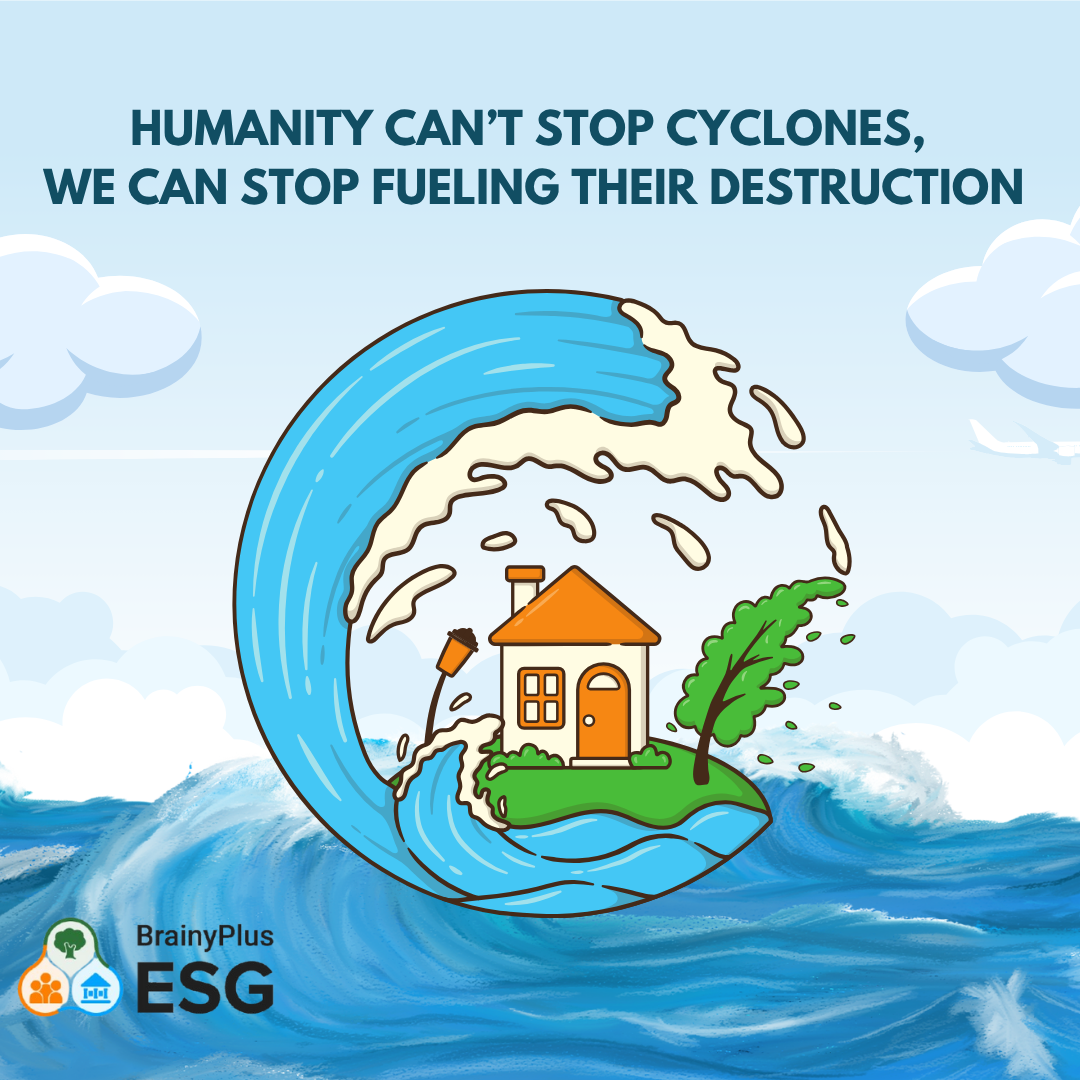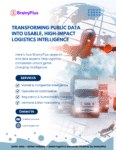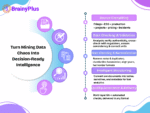
By BrainyPlus ESG Intelligence-
While tropical cyclones are natural weather systems, mounting scientific evidence confirms that human activity is intensifying their destructiveness. The storms themselves are not man-made-but their fuel increasingly is. Our emissions, land use, and consumption habits have created warmer oceans, higher sea levels, and fragile coastlines-turning ordinary storms into catastrophic events.
How Humanity Fuels Stronger Cyclones
Climate change and ocean warming
The most significant driver is global warming caused by burning fossil fuels. Warmer air holds more moisture, leading to heavier rainfall during storms, while warmer ocean surfaces feed cyclones with extra heat energy. The result: a rising number of intense Category 4 and 5 storms with stronger winds, higher rainfall, and deadlier storm surges.
Rising seas and coastal vulnerability Human-driven sea level rise amplifies cyclone impact. Even a small rise means storm surges now hit higher and travel farther inland. At the same time, unchecked coastal development destroys natural defenses such as mangroves, coral reefs, and wetlands.
Air pollution and atmospheric imbalance
Human-generated aerosols once masked part of greenhouse warming by reflecting sunlight. But as air quality improves, this “cooling shield” fades, making warming – and cyclone intensity-more pronounced.
Urban heat islands
Cities, built from heat-absorbing concrete and asphalt, trap warmth and alter local weather. This may not trigger cyclones, but it can worsen rainfall and wind patterns during storms, especially near dense coastal regions.
What We Can Still Change
Cyclones will always exist but humanity determines their cost. Changing habits at every level can reduce both their frequency and ferocity:
Governments & global agencies must invest in massive decarbonization, renewable energy transitions, and protection of coastal ecosystems like mangroves and coral reefs. Stronger early-warning systems and resilient infrastructure can save thousands of lives.
Businesses should cut carbon emissions, design climate-resilient supply chains, and develop sustainable materials and insurance models that support community adaptation.
Communities and individuals can act locally-preserving mangroves, clearing drainage systems, and following cyclone warnings. Prepared families and aware citizens form the foundation of resilience.
The Way Forward
We can’t stop cyclones-but we can stop fueling them.
Every mindful choice, every tree, every mangrove brings us closer to climate stability.
The science is clear: the more we protect nature, the more it protects us.
At BrainyPlus, we believe that actionable ESG data, informed decisions, and community awareness are key to building climate-resilient futures.






